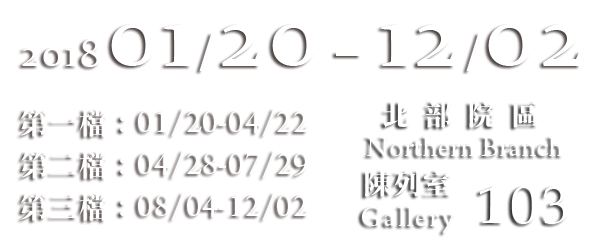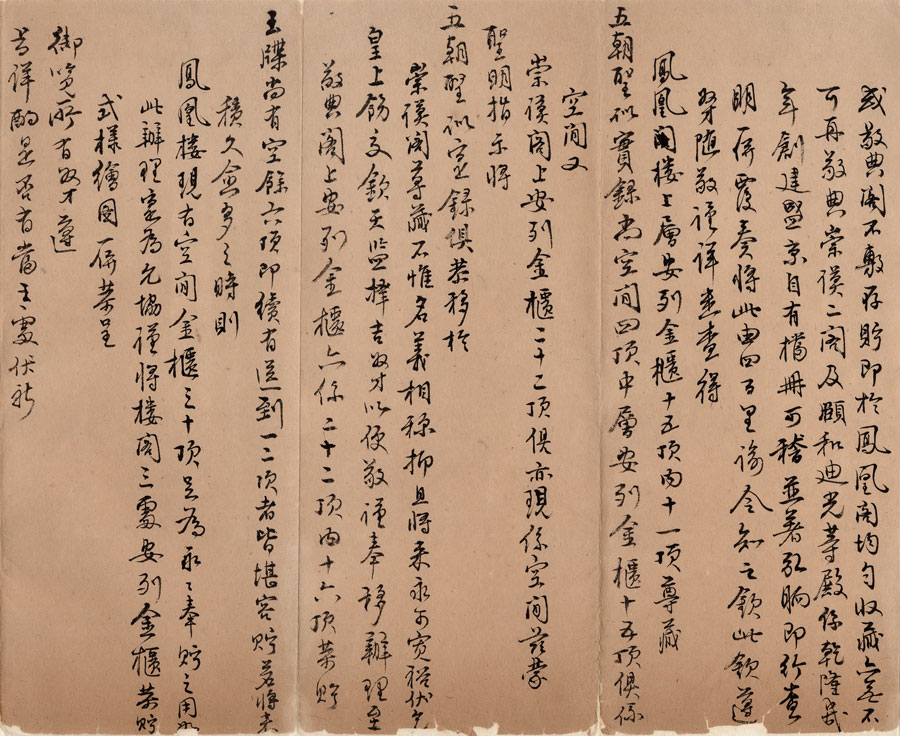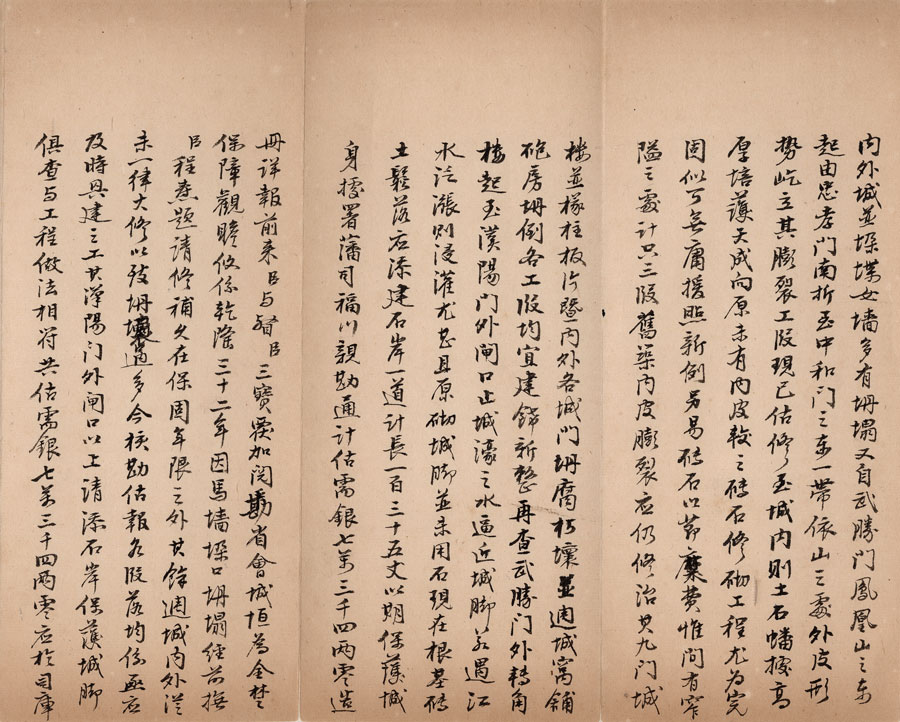All memorials annotated by the emperor were submitted to the Grand Council to be transcribed in running-cursive script. The transcribed copies served for future reference or were sent to the departments responsible for the tasks they described. On the covers of the transcriptions are listed the names of the officials submitting the memorials, the excerpts, and the dates of the emperor's annotations in vermilion ink; on the last fold are given the dates and contents of the emperor's annotations, with dates of submission in the lower left-hand corner. If the original palace memorials came with lists or illustrations, their numbers are also noted in the copies. Once the memorials had been transcribed, the originals would be sent back to the submitters or filed away in monthly dossiers (Yuezhe bao). The attached lists and illustrations were also kept in the dossiers with the memorials. The transcribed copies selected for this section give visitors a look at the format of memorials and a glimpse into the Qing dynasty memorial system.
Copy of a palace memorial on the storage of the imperial genealogy and veritable records in the Chongmo Pavilion
- Presented by Hongshang, General of Shengjing, on the 22nd day of the 4th month of the 43rd year of the Qianlong reign (May 18, 1778), Qing dynasty.
Qing Dynasty moved capital to Beijing and set Shengjing as second capital. It set system that all of important royal files and official historiographies to be reserved in both capitals to reveal respect and esteem to ancestors in northeast China. Chongmo depository, Jingdian depository and some other depository were built in Shengjing to reserve files in Qianlong 13 years (1748). The Genealogy (Yudie) which recorded royal family was reserved in Zhuyin-Dian depository after built. But the (Imperial Decrees) and (Veritable records) of Five Dynasties were put at Phoenix depository. Qing Dynasty Gaozong thought it's not match the system. So, he placed order to move to Chongmo depository. This memorial was Shengjing General - Hong-Shang as per the order surveyed all of official historiographies reserved situation in depository of Jing-Dian, Chong-Mo, Phoenix and so on, recorded the number of golden chambers of collected books at each place and drew on the memorial to submit to emperor.
Copy of a palace memorial requesting the repair of the provincial capital city wall to enhance defense
- Presented by Chen Huizu, Governor of Hubei, on the 2nd day of the 10th month of the 43rd year of the Qianlong reign (Nov. 20, 1778), Qing dynasty
This set of palace memorial, copies of palace memorials and enclosed drawings were recorded related information about Grand Coordinator of Hubei – Chen Huizu reported and applied to repair wall of Wuchang capital and build stone bank to protect the capital along the river on Oct. 2, Qianlong forty-three years (1778). Wuchang is capital of Hubei Province. The city wall was built since Ming Dynasty. The city wall was collapsed many parts and pending to be built in Qianlong forty-three years. Grand Coordinator - Chen Huizu reported and applied to fix and rebuild it after exploration. He drew, explained, remarked the situation of the wall collapsed and city corrupted. The figure shows that the city of Hubei province was built along with mountains from the north to east and south; and southwest turn north, closed to the Yangtze River. He also drew famous scenic in Hubei – Yellow Crane Tower and across the river relative to the Qing-Chuan Depository. The city wall looks great momentum and the river sparking on the figure. It specifically showed the specific situation of Hubei Wuchange city wall in eighteenth century.


